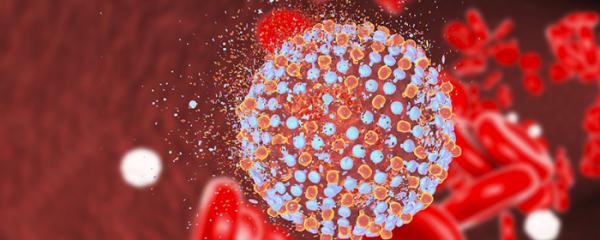Hepatitis C: Is eliminating the virus the only solution?

Over the years, the goal of hepatitis C antiviral treatments has been straightforward – to bring down viral load to a level as low as possible. And because of this, it is not surprising to see that patients are constantly looking for ways to lower their viral count.
We have always had the perception that clear of the virus means clear of liver disease, since the virus is what causes our liver to be sick in the first place. But does low viral load really equals better liver health? And by eliminating the virus entirely, can the liver function normally again?
How exactly does the virus damage the liver?
The most common form of liver damage resulted from hepatitis C is inflammation, which could lead to fibrosis (healthy liver tissues being replaced by scar tissues) and cirrhosis if not monitored.
Many would think that the damage is mainly caused by the virus attacking the liver. But in fact, it is the immune system’s response to the virus that causes the most damage. That is to say, the existence of the virus alone does not cause the damage, but rather it is when the body tries to fight off the virus that causes the injury. The inflammation sustained is a result of the body trying to fight against the virus.
If the inflammation is only the body’s response to the virus, how important is the viral count when it comes to monitoring the progression of liver diseases?
Free of virus = free of liver damage?
A common misconception about managing hepatitis C is that the lower the viral load, the better the liver health.
But according to a journal published in The American Association for the Study of Liver Diseases, several research studies tried to make a positive connection between hepatitis C viral load and liver disease severity (indicated by ALT level), but such association could not be found. In other words, the amount of virus present in the liver does not correlate with the degree of liver damage.
This phenomenon has also been acknowledged by hepatology professor Dr. Howard Monsour, M.D. He pointed out that “it seems that it is more important 'how' your body responds to the presence of the hepatitis C virus in your liver than 'how much' virus is in your liver that counts.”
ALT level as a more accurate indicator
Everyone’s liver reacts differently to the virus. People with a low viral count do not necessarily have a high degree of liver injury, and those with a high viral load might have little to no liver damage. Compared with viral load, ALT level appears to be a more accurate indicator of liver injury.
Even with recent hepatitis C treatments that have a higher success rate in controlling the viral load, it is important to recognise that the treatments cannot help the liver recover from previously sustained damage. Liver protection is necessary to prevent the already existing liver problems from progressing.
However, this is not to say that the viral load has no significance on liver health. In fact, viral load is used as an indication of how successful antiviral treatment is going to be. The lower the viral load, the more likely the treatment is going to work. But when it comes to maintaining good liver health, which should be the ultimate goal of every liver patient including people with hepatitis C, keeping ALT level within range is a much more effective approach than just aiming it reducing the viral load.
- National Center for Biotechnology Information, https://www.ncbi.nlm.nih.gov/pmc/articles/PMC2653363/, (Accessed Date: 2018-12-28)
- American Association for the Study of Liver Diseases, https://aasldpubs.onlinelibrary.wiley.com/doi/pdf/10.1002/hep.20982, (Accessed Date: 2018-12-28)
- Healthline, https://www.healthline.com/health/hepatitis-c-viral-load#low-vs.-high-viral-load, (Accessed Date: 2018-12-28)
- The Hepatitis C Trust, http://www.hepctrust.org.uk/information/impact-hepatitis-c-liver/hepatitis-c-and-liver-damage, (Accessed Date: 2018-12-28)
- * All research and clinical data should be used as reference purposes only, results may vary.






